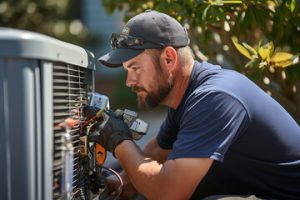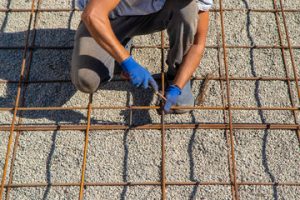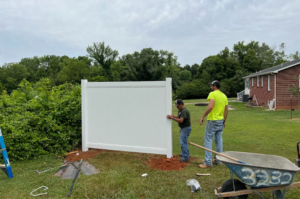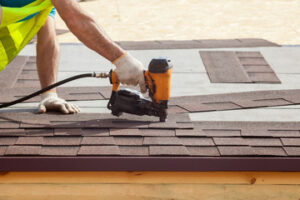Bathroom Remodeling Temecula is more than a cosmetic update; it is about tailoring the space to fit your lifestyle, enhancing functionality and adding value. This transformation can be a lengthy process, depending on the scope of your project.
Remodeling differs from renovation in that it involves changing out the hardware like a tub-to-shower conversion or new countertops.

The layout of your bathroom remodel is an important consideration because it can affect both the function and aesthetics of your space. A professional contractor can help you plan your renovation and choose a design that will meet your family’s needs while increasing the value of your home.
There are a variety of layout options, depending on the size of your bathroom and how you use it. For example, if your bathroom is small, you might want to consider installing a corner shower to maximize the amount of space available. This layout also works well for larger bathrooms that don’t have enough space for a tub.
A more expansive bathroom may feature a separate tub and shower or a large vanity with two sinks. A shower with a built-in bench is another option for people who like to read or watch TV while they’re taking a bath. Choosing the right layout for your bathroom will ensure that it is comfortable and functional. Choose a style that reflects your personal taste and fits how you use the room to make it feel truly special. By combining form and function, your bathroom will be the perfect place to melt away your stress.
Design
The design aspect of a bathroom remodel ties directly into its layout, but it can also include aesthetic changes like tile selections and accessories. The goal of this part is to create a space that meets the functional requirements of your household and suits your personal style.
The first step in the process is a detailed design and planning phase, which lays the groundwork for your project. This includes determining your budget, creating a timeline, and getting the necessary permits. After the design stage is complete, it’s time to begin demolition and prepare the space for installation of new fixtures and materials.
This is a great opportunity to upgrade your bathroom with energy-efficient appliances and fixtures that can save you money in the long run. TradePro Installations can help you identify and install these efficiency improvements to make the most of your space.
Plumbing
Bathroom remodeling is one of the most popular home improvement projects because it can enhance a room’s functionality and aesthetic. A remodel can also increase the resale value of your home and reduce energy costs.
In order for your bathroom remodel to be successful, it’s important to have a professional contractor oversee the project. They will ensure that all work meets local safety regulations and codes. They will also understand how changes could affect other systems in your house, such as the plumbing lines.
It’s also important to plan the layout of your new bathroom before starting any construction. This will help you avoid any costly surprises down the road. For example, neglecting ventilation can lead to mold and mildew. It’s also important to consider storage needs, as a lack of space can lead to a cluttered bathroom.
In addition, it’s a good idea to install new fixtures that are more water-efficient. For example, low-flow toilets, showerheads, and faucets can cut down on your water usage while reducing your utility bills. Additionally, upgrading your pipes to PEX or copper can reduce the risk of leaks. Lastly, it’s a good idea to update your lighting with LED bulbs that use less energy and last longer than traditional incandescent bulbs.
Electricity
Bathrooms need a specific amount of power for lighting and appliances. They also have a high risk of water damage that requires a special electrical rating for fixtures and wiring. An electrician will follow the proper codes and regulations for a safe bathroom during a remodel.
It’s important that your bathroom is on a dedicated circuit and is GFCI protected. This will prevent electrocution accidents and keep your home safe. It’s also a good time to upgrade to energy-efficient LED lights. They’re not only cheaper to run but they also use less energy, saving you money in the long run.
Some bathrooms require ventilation fans to dry the room after each use. This helps prevent mold and mildew. Depending on your needs, you can choose between quiet fans or more powerful ones that move more air.
When choosing an electrician for your remodel, check their credentials and portfolio to ensure they have the experience you need. Request references and meet with them in person to assess their communication skills and professionalism. A great electrician will take the time to listen to your needs and answer any questions you may have. They will also offer suggestions to help you save money and improve your space.
Flooring
Bathrooms are one of the most important rooms in your home. Whether you’re looking to add functionality, style, or both, remodeling your bathroom can improve your daily routine and increase the value of your home.
The first step of a remodel is demolition, which can take several days depending on how much you’re changing. This will include removing old fixtures and flooring, as well as moving or replacing plumbing and electrical lines.
Once the demo is finished, it’s time for new materials and installation. This includes everything from the floor to the cabinets and can be a labor-intensive part of the process. It’s a good idea to hire a professional contractor for this phase so that you don’t run into any issues or encounter expensive surprises down the line.
For the floors, tile is a popular choice for bathrooms due to its water resistance and durability. If you’re on a budget, consider vinyl or laminate flooring. These options are durable and easy to maintain, but don’t offer the same visual appeal as a porcelain or ceramic tile.
Cabinets
Cabinets are built-in pieces of furniture that conveniently hold items, and they come in multiple designs. They may be anchored to the wall or float above another piece of furniture like a counter or sink. They can be made of a variety of materials including wood and stainless steel. Some cabinets have a door that opens to reveal shelves and drawers while others are merely a box with a front. Some cabinets even have a shelf at the top where you can place a mirror or other decorative items.
Cabinets can help organize your bathroom by containing many different storage areas for toiletries and towels. You can also use dividers within a drawer to keep all of your hair tools and makeup organized in one location. This makes it easier to find what you need when getting ready.
Using the proper storage areas in your bathroom can make your bathroom look more spacious and allow for easy organization. Add some open shelving on a wall or a cabinet above the toilet for extra storage, and paint it in the same color as your walls to keep the room looking sleek. Another option is a bookshelf, as seen in this bathroom by House Nine Interiors, which provides plenty of storage and looks stylish in the space.
Lighting
The lighting and power supplies in a bathroom remodel provide both functionality and aesthetics. They include various lighting fixtures, outlets and switches, as well as light and exhaust fans. In addition to ensuring that electrical wiring is properly done in accordance with local codes, these elements should be chosen and installed carefully to enhance the design of the space.
For example, recessed lights are often used in bathrooms to add brightness to the room. They also help create a modern, clean look. Pendant lighting is a stylish option that provides ambient and task lighting, while creating a focal point in the room. These options work especially well over a freestanding tub or as a chandelier above a dining table.
Having enough outlets for appliances like hair dryers, electric shavers and toothbrush chargers is important. Outlets with GFCI protection are required by code to ensure safety, and these should be placed strategically near sinks. Adding motion detectors to light switches is another way to save on electricity costs by making it easy to avoid leaving the bathroom lights on.
Paint colors can dramatically influence the overall look and feel of a bathroom, and moisture-resistant paints are essential in a humid environment. Some popular bathroom paint shades include whites, soft blues and grays. Lighter colors tend to make a room appear larger and brighter, while darker shades can create drama and sophistication.








